Transforming E-commerce Strategy: AI-Powered Visual Roadmaps
Revolutionize your business growth with intelligent planning tools
I've witnessed firsthand how e-commerce planning has evolved dramatically in recent years. The traditional spreadsheets and text-heavy documents that once defined strategic planning are rapidly giving way to more dynamic, visual approaches powered by artificial intelligence. In this guide, I'll show you exactly how to leverage these powerful new tools to transform your e-commerce strategy into clear visual roadmaps that drive alignment and accelerate growth.
Whether you're running a startup, mid-size retailer, or enterprise platform, the techniques and frameworks I'll share will help you create compelling visual roadmaps that communicate your vision effectively to all stakeholders while adapting intelligently to changing market conditions.
The Evolution of E-commerce Planning in the AI Era
I remember when e-commerce planning meant endless spreadsheets, text documents, and static presentations. Today, we're experiencing a fundamental shift as AI transforms how businesses approach strategic roadmapping. This evolution isn't just about new tools—it's about a completely different way of thinking about and communicating strategy.
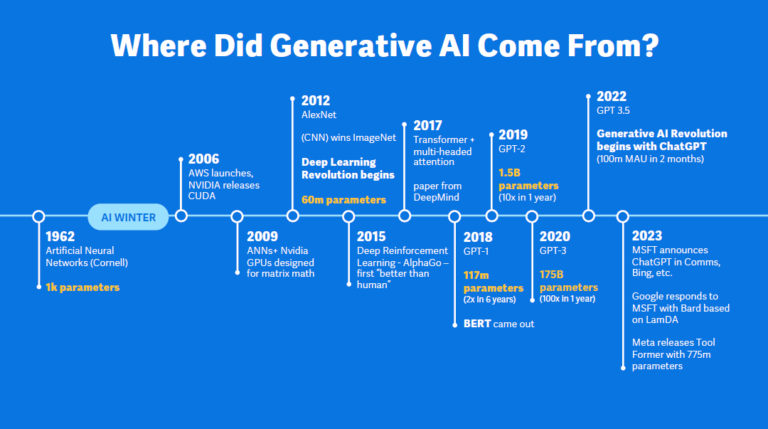
The challenges facing today's e-commerce businesses are multifaceted. Teams struggle with siloed planning, inconsistent prioritization, and difficulty adapting to rapidly changing market conditions. Visual roadmaps address these challenges by creating a single source of truth that aligns stakeholders across departments.
According to recent industry research, e-commerce companies that implement AI-powered planning tools see significant improvements in cross-functional alignment. In fact, intelligent tools are changing the way e-commerce companies capture consumer interest and drive sales conversions. The businesses that embrace these tools gain a significant competitive advantage through faster decision-making and more adaptable strategies.
As company ai transformation roadmap strategies evolve, the businesses that master visual planning gain a distinct advantage in communicating complex ideas clearly across teams and departments.
Key Components of an Effective E-commerce Roadmap
In my experience working with dozens of e-commerce businesses, I've found that the most effective roadmaps share several critical components. These elements create a framework that balances strategic vision with tactical execution.
flowchart TD
A[E-commerce Roadmap] --> B[Clear Objectives & KPIs]
A --> C[Strategic Timeline]
A --> D[Visual Priority Hierarchy]
A --> E[Customer Journey Integration]
A --> F[Technology Stack Plan]
A --> G[Resource Allocation]
A --> H[Feedback Mechanisms]
style A fill:#FF8000,stroke:#333,stroke-width:2px,color:white
style B fill:#FFB74D,stroke:#333,stroke-width:1px
style C fill:#FFB74D,stroke:#333,stroke-width:1px
style D fill:#FFB74D,stroke:#333,stroke-width:1px
style E fill:#FFB74D,stroke:#333,stroke-width:1px
style F fill:#FFB74D,stroke:#333,stroke-width:1px
style G fill:#FFB74D,stroke:#333,stroke-width:1px
style H fill:#FFB74D,stroke:#333,stroke-width:1px
Defining Clear Objectives and KPIs
Every successful roadmap starts with clearly defined objectives and measurable KPIs. I always recommend using the SMART framework (Specific, Measurable, Achievable, Relevant, Time-bound) to ensure your goals provide clear direction. For e-commerce specifically, these might include:
- Increase conversion rate from 2.3% to 3.5% within 6 months
- Reduce cart abandonment by 15% by implementing new checkout flow by Q3
- Increase average order value by 20% through AI-powered recommendation engine
- Expand product catalog from 1,200 to 2,000 SKUs while maintaining inventory efficiency
Balancing Short-term and Long-term Vision
One of the biggest challenges I see with e-commerce roadmaps is balancing immediate needs with long-term strategic goals. An effective roadmap creates visual connections between quick wins and foundational initiatives that may take longer to implement but deliver greater value over time.
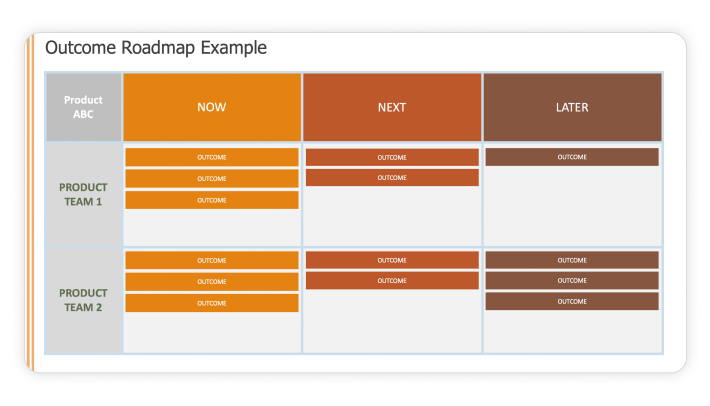
Creating Visual Hierarchies
When I work with clients on their roadmaps, I emphasize the importance of visual prioritization. Using PageOn.ai's AI Blocks, we can create intuitive visual hierarchies that make it immediately clear which initiatives are most critical. This visual approach helps stakeholders quickly understand priorities without having to dig through detailed documentation.
Integrating Customer Journey Touchpoints
The most effective e-commerce roadmaps explicitly connect strategic initiatives to customer journey touchpoints. This approach ensures that technical and business priorities remain firmly anchored to customer experience improvements. By mapping initiatives to specific touchpoints, teams maintain focus on delivering real value to customers.
Pro Tip: When creating your e-commerce roadmap, always include visual indicators that connect each initiative to specific customer journey stages. This helps teams understand the "why" behind each project and maintains customer-centricity.
The 7-Step Framework for AI-Enhanced E-commerce Planning
Through my work with numerous e-commerce businesses, I've developed a comprehensive framework for creating effective AI-enhanced roadmaps. This approach builds on established roadmapping principles while incorporating the unique advantages of AI visualization tools.
flowchart TD
Start([Start]) --> Step1[1. Assessment]
Step1 --> Step2[2. Market Analysis]
Step2 --> Step3[3. Tech Stack Evaluation]
Step3 --> Step4[4. Customer Experience Mapping]
Step4 --> Step5[5. Implementation Timeline]
Step5 --> Step6[6. Metrics Dashboard]
Step6 --> Step7[7. Continuous Learning]
Step7 --> Finish([Complete Roadmap])
Step1 -.-> A1[Gap Analysis]
Step1 -.-> A2[Capability Assessment]
Step2 -.-> B1[Competitor Visualization]
Step2 -.-> B2[Trend Analysis]
Step3 -.-> C1[Integration Planning]
Step3 -.-> C2[Build vs Buy Decisions]
Step4 -.-> D1[Channel Mapping]
Step4 -.-> D2[Pain Point Identification]
Step5 -.-> E1[Dependency Mapping]
Step5 -.-> E2[Resource Allocation]
Step6 -.-> F1[KPI Visualization]
Step6 -.-> F2[Real-time Monitoring]
Step7 -.-> G1[Feedback Loops]
Step7 -.-> G2[Iteration Cycles]
style Start fill:#FF8000,stroke:#333,stroke-width:2px,color:white
style Finish fill:#FF8000,stroke:#333,stroke-width:2px,color:white
style Step1 fill:#FFB74D,stroke:#333,stroke-width:1px
style Step2 fill:#FFB74D,stroke:#333,stroke-width:1px
style Step3 fill:#FFB74D,stroke:#333,stroke-width:1px
style Step4 fill:#FFB74D,stroke:#333,stroke-width:1px
style Step5 fill:#FFB74D,stroke:#333,stroke-width:1px
style Step6 fill:#FFB74D,stroke:#333,stroke-width:1px
style Step7 fill:#FFB74D,stroke:#333,stroke-width:1px
Step 1: Assessment of Current E-commerce Capabilities
I always start with a thorough assessment of the current e-commerce ecosystem. This includes evaluating:
- Platform capabilities and limitations
- Integration points with other business systems
- Team skills and resource availability
- Current performance metrics and benchmarks
- Identified pain points in the customer journey
Using visualization tools, we can map these elements to create a clear picture of the current state. This visual baseline makes it much easier to identify gaps and opportunities for improvement.
Step 2: Market and Competitor Analysis Visualization
Next, I help clients create visual competitive landscapes that map out:
- Competitor positioning and unique value propositions
- Feature comparison matrices across key competitors
- Market trends and emerging opportunities
- Customer segment analysis and preference mapping
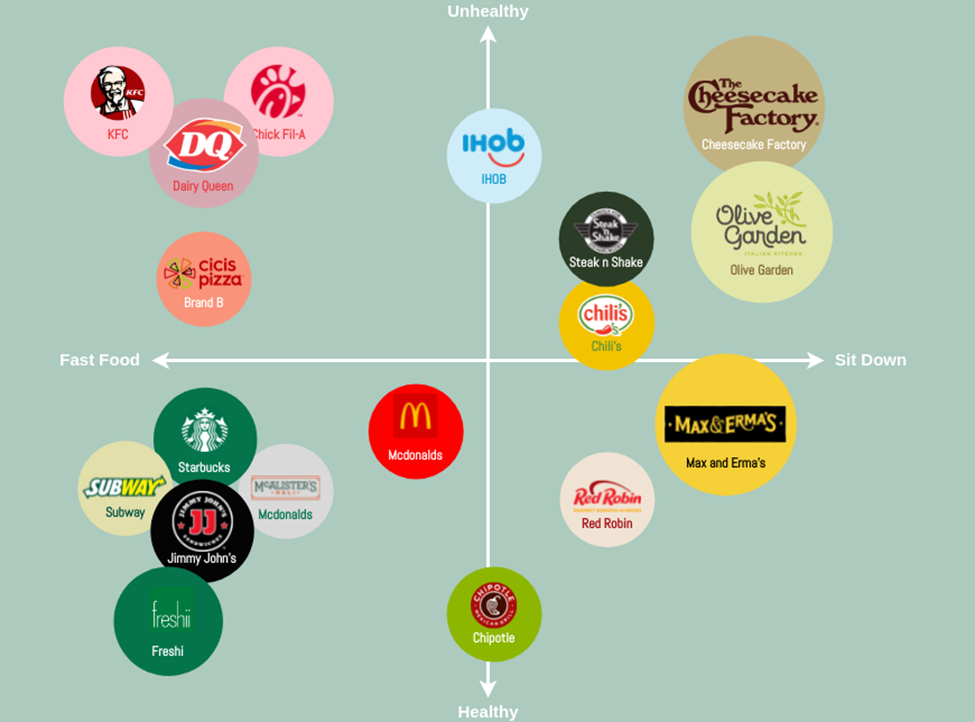
Step 3: Technology Stack Evaluation
The technology foundation is critical for e-commerce success. In this step, I work with teams to:
- Map current technology components and their relationships
- Identify integration challenges and opportunities
- Evaluate build vs. buy decisions for new capabilities
- Create visual technology roadmaps with clear dependencies
Step 4: Customer Experience Mapping
Understanding the customer journey is essential for effective roadmapping. I help teams create detailed visual journey maps that highlight:
- Key touchpoints across all channels
- Pain points and friction in the current experience
- Opportunities for personalization and optimization
- Integration points between marketing, sales, and service
journey
title Customer Journey Map
section Awareness
Social Media Discovery: 5: Customer
Search Engine Results: 4: Customer
Referral from Friend: 5: Customer
section Consideration
Product Browse: 3: Customer
Price Comparison: 2: Customer, Pain Point
Reviews Research: 4: Customer
section Purchase
Add to Cart: 3: Customer
Checkout Process: 1: Customer, Pain Point
Payment: 2: Customer, Pain Point
section Retention
Order Updates: 4: Customer
Delivery Experience: 3: Customer
Follow-up Support: 5: Customer
Step 5: Implementation Timeline with Dependencies
Creating a clear visual timeline is critical for execution success. I use AI marketing assistants to help generate visual roadmaps that show:
- Project phases and key milestones
- Dependencies between different initiatives
- Resource allocation across timeline
- Critical path identification
Step 6: Performance Metrics Dashboard
Defining how success will be measured is essential. I work with teams to design visual dashboards that:
- Connect strategic objectives to specific metrics
- Visualize key performance indicators
- Create early warning indicators for potential issues
- Enable data-driven decision making
Step 7: Continuous Learning and Adaptation
The final step is establishing mechanisms for ongoing improvement. I help teams:
- Create feedback loops between implementation and planning
- Design regular review cadences and adjustment processes
- Use PageOn.ai's Deep Search to incorporate latest industry benchmarks and trends
- Maintain the critical balance between AI automation and human oversight
As ai marketing tools continue to evolve, this continuous learning step becomes increasingly important to stay competitive.
From Abstract Strategy to Visual Clarity
One of the biggest challenges I see in e-commerce strategy is translating abstract concepts into clear, actionable plans. This is where AI-powered visualization tools truly excel.

Converting Complex Concepts into Intuitive Visuals
When I work with e-commerce teams, I often find they struggle to communicate complex technical concepts to non-technical stakeholders. Using PageOn.ai, we can transform dense technical requirements into intuitive visual representations that anyone can understand.
For example, instead of describing a complex customer segmentation model in paragraphs of text, we can create a visual diagram that shows:
- Customer segments represented as distinct visual clusters
- Key attributes that define each segment
- Relative size and value of different segments
- Overlap and relationships between segments
Case Study: Reducing Miscommunication
I recently worked with a mid-size fashion retailer that was struggling with cross-functional alignment. Their marketing, merchandising, and technology teams had different interpretations of priorities, leading to significant delays and wasted resources.
By implementing visual roadmapping with PageOn.ai, they were able to reduce planning meetings by 40% while increasing project completion rates by 35%. The visual approach created a common language that bridged departmental divides.
Techniques for Presenting Technical Requirements
When presenting technical requirements to non-technical stakeholders, I've found these visualization approaches to be particularly effective:
- Progressive disclosure: Layer information so viewers can drill down from high-level concepts to technical details as needed
- Visual metaphors: Use familiar visual concepts to represent complex technical processes
- Color-coding: Establish consistent color systems that convey meaning (e.g., red for high-risk items)
- Comparative visualization: Show before/after states to clearly communicate the impact of changes
These approaches help bridge the gap between technical and business stakeholders, ensuring everyone has a shared understanding of the roadmap.
Building Dynamic Roadmaps with AI Tools
Static roadmaps quickly become outdated in today's fast-moving e-commerce landscape. I've found that AI-powered tools enable a more dynamic approach that can adapt as market conditions change.
Automated Data Integration
One of the most powerful capabilities of modern AI roadmapping tools is their ability to integrate real-time data into planning visualizations. Using PageOn.ai's Deep Search functionality, we can:
- Automatically incorporate market trends and consumer behavior shifts
- Visualize customer feedback and sentiment analysis within strategic planning
- Create dynamic data visualizations that update as conditions change
- Highlight emerging opportunities and threats based on real-time data
flowchart TD
A[Data Sources] --> B{PageOn.ai Deep Search}
B --> C[Market Trends]
B --> D[Competitor Analysis]
B --> E[Customer Feedback]
B --> F[Performance Metrics]
C --> G[Dynamic Roadmap]
D --> G
E --> G
F --> G
G --> H[Visualization Layer]
H --> I[Stakeholder Dashboard]
H --> J[Team Implementation View]
H --> K[Executive Summary]
style A fill:#FFB74D,stroke:#333,stroke-width:1px
style B fill:#FF8000,stroke:#333,stroke-width:2px,color:white
style G fill:#FF8000,stroke:#333,stroke-width:2px,color:white
style H fill:#FFB74D,stroke:#333,stroke-width:1px
This approach creates a living roadmap that evolves with your business and market conditions, rather than becoming outdated as soon as it's created.
Collaborative Roadmapping
Another powerful aspect of AI-enhanced roadmapping is the ability to facilitate collaboration across stakeholders. I've helped teams implement approaches that:
- Use AI to synthesize input from multiple stakeholders into cohesive visualizations
- Convert verbal feedback and discussions into visual roadmap elements in real-time
- Create scenario planning visualizations that show different potential paths
- Maintain version history to track how the roadmap evolves over time
While AI tools dramatically improve the roadmapping process, I always emphasize the importance of maintaining the human element. As noted in industry research, the most successful implementations keep ai-generated marketing content and planning tools in a supporting role, with human experts making the final strategic decisions.
Important: When implementing AI-powered roadmapping, establish clear processes for human review and approval. The goal is to use AI to enhance human decision-making, not replace it.
Implementation Strategies for Different E-commerce Sectors
Different e-commerce business models require tailored approaches to roadmap implementation. Through my work across various sectors, I've developed specific strategies for each.
B2C Retail: Visual Roadmaps for Omnichannel Experiences
For B2C retailers, the key challenge is creating seamless experiences across multiple channels. Effective roadmaps for this sector should:
- Visualize the customer journey across all touchpoints (mobile, web, in-store, social)
- Map inventory and fulfillment capabilities to customer expectations
- Prioritize personalization initiatives based on impact and feasibility
- Create clear visual connections between marketing campaigns and technical capabilities

B2B Commerce: Mapping Complex Buying Journeys
B2B e-commerce presents unique challenges due to complex buying processes and multiple stakeholders. Effective roadmaps for this sector should:
- Visualize approval workflows and role-based permissions
- Map account hierarchies and organizational purchasing structures
- Prioritize self-service capabilities for common buyer tasks
- Create clear connections between sales team tools and e-commerce platform capabilities
Subscription Services: Visualizing Retention Strategies
For subscription-based e-commerce, retention and expansion are critical metrics. Effective roadmaps should:
- Visualize the customer lifecycle from acquisition through expansion
- Map engagement triggers and intervention points for at-risk subscribers
- Prioritize features that drive recurring value and reduce churn
- Create clear connections between pricing tiers and feature development
Marketplace Platforms: Balancing Buyer and Seller Experience
Marketplace platforms face the unique challenge of serving two distinct user groups. Effective roadmaps should:
- Visualize the interconnections between buyer and seller experiences
- Map marketplace health metrics and network effects
- Prioritize features that drive liquidity and matching efficiency
- Create clear connections between platform policies and technical capabilities
Using PageOn.ai's Vibe Creation feature, we can tailor visual approaches to each specific industry context, ensuring the roadmap resonates with the unique needs of that sector.
For small businesses just starting their e-commerce journey, AI assistants for small business can be particularly valuable in creating professional roadmaps without requiring extensive resources.
Measuring Success and Iterating
Creating a roadmap is just the beginning—measuring its effectiveness and adapting based on results is where the real value emerges. I've developed several approaches to help teams track progress and iterate effectively.
Designing Visual KPI Dashboards
Effective measurement starts with connecting strategic objectives to specific, measurable KPIs. I work with teams to create visual dashboards that:
- Display real-time performance against key metrics
- Highlight trends and patterns over time
- Connect activities to outcomes through clear visual relationships
- Provide different views for different stakeholders (executive, operational, technical)
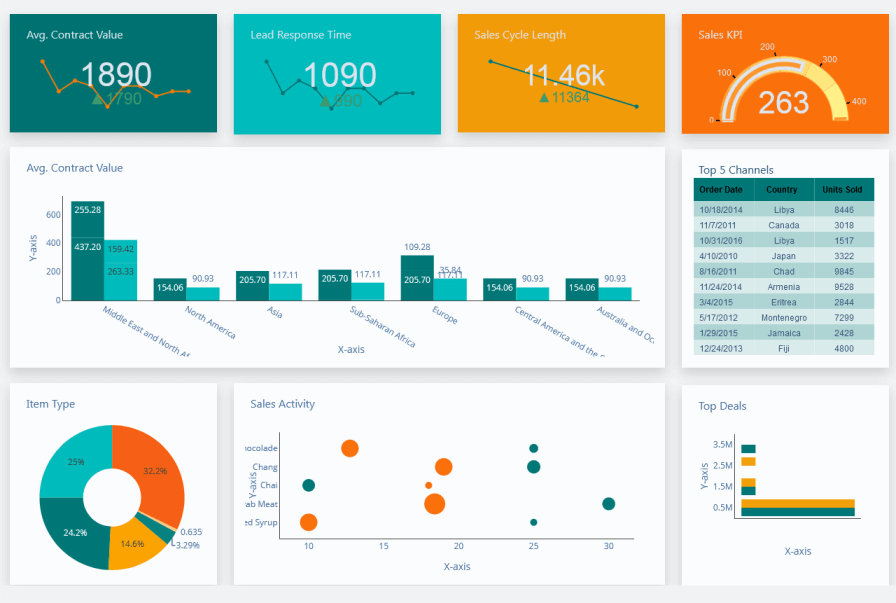
Creating Before/After Visualizations
One of the most powerful ways to demonstrate progress is through before/after comparisons. These visualizations help:
- Clearly communicate improvements in key metrics
- Showcase the impact of strategic initiatives
- Build momentum and support for ongoing investment
- Identify which approaches are delivering the best results
Establishing Feedback Loops
Continuous improvement requires robust feedback mechanisms. I help teams implement processes that:
- Capture insights from implementation teams
- Gather customer feedback on new features and capabilities
- Track market responses to strategic initiatives
- Identify emerging opportunities and threats
flowchart LR
A[Strategic Planning] --> B[Implementation]
B --> C[Measurement]
C --> D[Analysis]
D --> E[Adjustment]
E --> A
style A fill:#FFB74D,stroke:#333,stroke-width:1px
style B fill:#FFB74D,stroke:#333,stroke-width:1px
style C fill:#FFB74D,stroke:#333,stroke-width:1px
style D fill:#FFB74D,stroke:#333,stroke-width:1px
style E fill:#FFB74D,stroke:#333,stroke-width:1px
Using AI for Roadmap Adjustments
PageOn.ai's Agentic capabilities can help teams make data-driven adjustments to their roadmaps. These tools can:
- Analyze performance data to identify patterns and insights
- Suggest roadmap adjustments based on actual results
- Generate alternative approaches when initiatives underperform
- Create visual scenario comparisons to support decision-making
By establishing these measurement and iteration processes, teams can ensure their roadmaps remain living documents that drive ongoing improvement rather than static artifacts that quickly become outdated.
Future-Proofing Your E-commerce Roadmap
In the rapidly evolving e-commerce landscape, creating roadmaps that can adapt to emerging technologies and changing market conditions is essential. I've developed several approaches to help businesses future-proof their planning.
Incorporating Emerging Technologies
Effective roadmaps need to account for emerging technologies that could impact your business. I help teams:
- Create technology radar visualizations that map potential impacts and timelines
- Develop adoption criteria for evaluating new technologies
- Build experimental pathways that allow for controlled testing
- Visualize integration points between current systems and emerging technologies
Building Flexibility into Strategic Visualization
Future-proof roadmaps need to be structured in ways that accommodate change. I recommend:
- Creating modular roadmap components that can be rearranged as priorities shift
- Establishing clear decision points where direction can be adjusted
- Visualizing dependencies so impacts of changes are immediately clear
- Building confidence thresholds into longer-term planning horizons
Scenario Planning with AI-Generated Alternatives
One of the most powerful approaches to future-proofing is developing multiple scenario plans. Using PageOn.ai, teams can:
- Create visual comparisons of different strategic paths
- Model potential market shifts and their impacts
- Develop contingency plans for key risks
- Identify common elements across scenarios to prioritize "no-regret" moves
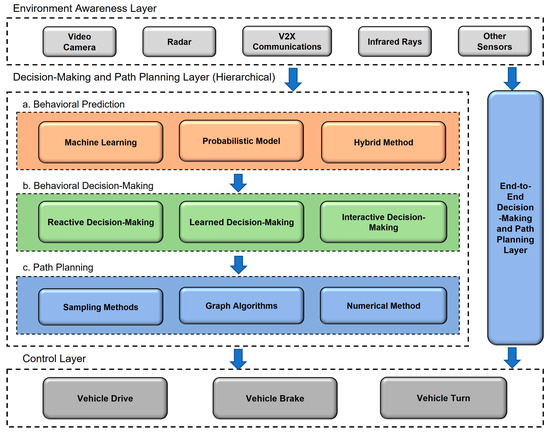
Visual Decision Trees
PageOn.ai excels at transforming complex "what-if" scenarios into clear visual decision trees. These visualizations help teams:
- Map out decision points and their potential consequences
- Identify trigger events that would necessitate a strategy shift
- Visualize the probability and impact of different scenarios
- Create contingency plans for high-impact, low-probability events
By building these future-proofing elements into your roadmap, you create a strategic planning approach that can adapt to changing conditions while maintaining a clear direction.
Case Studies: Transformation Through Visual AI Roadmapping
To illustrate the real-world impact of AI-powered visual roadmapping, I'd like to share several case studies from businesses that have successfully transformed their e-commerce strategy.
Mid-size Retailer: From Fragmented Planning to Cohesive Strategy
Challenge: A mid-size home goods retailer with 50+ stores and a growing online presence was struggling with fragmented planning across their digital and physical channels. Different departments had separate roadmaps with conflicting priorities, leading to resource conflicts and missed deadlines.
Approach: We implemented a visual roadmapping process using PageOn.ai that:
- Created a unified visual representation of all initiatives across channels
- Established clear dependencies between physical and digital projects
- Visualized resource allocation to identify bottlenecks
- Implemented regular review cadences with updated visualizations
Results: Within six months, the retailer saw a 35% improvement in on-time project delivery and a 28% increase in cross-channel sales. More importantly, they established a planning culture where teams naturally thought in terms of omnichannel customer experiences rather than siloed channel metrics.
gantt
title Retailer Transformation Timeline
dateFormat YYYY-MM-DD
section Assessment
Current State Analysis :a1, 2023-01-01, 30d
Stakeholder Interviews :a2, after a1, 21d
section Planning
Visual Roadmap Creation :b1, after a2, 30d
Cross-Team Alignment :b2, after b1, 14d
section Implementation
Digital Initiatives :c1, after b2, 60d
Store Initiatives :c2, after b2, 90d
section Results
Performance Monitoring :d1, after c1, 30d
Roadmap Refinement :d2, after d1, 30d
Enterprise B2B Platform: Stakeholder Alignment
Challenge: A large B2B e-commerce platform serving the industrial equipment sector was struggling to align their product roadmap with the needs of multiple stakeholder groups. Sales, product, and customer success teams had different priorities, leading to customer dissatisfaction and missed market opportunities.
Approach: We implemented a collaborative visual roadmapping process that:
- Created visual representations of each stakeholder group's priorities
- Used AI-powered analysis to identify common themes and priorities
- Developed a unified roadmap with clear value propositions for each group
- Established visual feedback mechanisms to track ongoing alignment
Results: The company achieved a 40% reduction in roadmap disputes and a 25% increase in feature adoption rates. Customer satisfaction scores improved by 18 points, and sales cycles shortened as the product roadmap better addressed prospect concerns.
Startup's MVP Development Acceleration
Challenge: A funded e-commerce startup was struggling to prioritize features for their MVP launch. With limited resources and an ambitious timeline, they needed to identify the minimum set of features that would deliver maximum market impact.
Approach: We implemented a visual MVP roadmapping process that:
- Created visual impact/effort matrices for all proposed features
- Developed customer journey visualizations to identify critical touchpoints
- Used AI-powered analysis to compare feature sets against competitor offerings
- Built a phased release plan with clear success criteria
Results: The startup launched their MVP two months ahead of schedule with a focused feature set that resonated strongly with early users. They achieved a 22% conversion rate from free trial to paid subscription, significantly above industry benchmarks.
Maintaining the Human Element
Across all these cases, a critical success factor was maintaining the right balance between AI-powered tools and human judgment. Teams used AI to:
- Analyze large datasets and identify patterns
- Generate visual representations of complex relationships
- Create alternative scenarios and approaches
- Track and visualize progress against goals
However, human experts remained essential for:
- Making final strategic decisions based on business context
- Interpreting customer needs and market dynamics
- Building consensus across stakeholder groups
- Adding creative insights and innovation to the roadmap
This balance ensured that AI tools enhanced human capabilities rather than attempting to replace human judgment.
Transform Your E-commerce Strategy with PageOn.ai
Ready to create stunning visual roadmaps that align your team and accelerate your e-commerce growth? PageOn.ai's powerful visualization tools make it easy to transform complex strategies into clear, actionable plans.
Start Creating with PageOn.ai TodayThe Future of E-commerce Planning
As we look to the future of e-commerce strategy, it's clear that visual roadmapping powered by AI will become increasingly essential. The businesses that master this approach gain significant advantages in alignment, agility, and execution.
I've seen firsthand how tools like PageOn.ai can transform the planning process, turning abstract concepts into clear visual roadmaps that drive alignment and action. The key is finding the right balance between AI-powered visualization and human strategic judgment.
By implementing the frameworks and approaches outlined in this guide, you can create e-commerce roadmaps that not only communicate your vision effectively but also adapt intelligently as market conditions change. This combination of clarity and flexibility is what separates leading e-commerce businesses from those that struggle to keep pace.
I encourage you to start small—pick one area of your e-commerce strategy that would benefit from improved visualization, and experiment with the techniques we've discussed. As you see the impact, you can expand your approach to create comprehensive visual roadmaps that drive your entire e-commerce business forward.
You Might Also Like
Mastering Investor Communication: Angel to Series C Fundraising Visuals
Learn how to adapt your fundraising visual strategy from Angel to Series C. Discover stage-specific investor communication techniques and create compelling fundraising materials.
Essential Open Source Tools for Local AI Development and Deployment | PageOn.ai
Discover the best open source tools for local AI development, from foundation models like Llama to deployment platforms like Ollama. Build your complete local AI stack with this visual guide.
Transforming Industries with Language Models: From Summarization to Question Answering
Explore practical applications of language models from text summarization to question answering systems. Learn how LLMs are transforming healthcare, finance, e-commerce and more with PageOn.ai.
Optimizing AI Model Costs: Balancing Performance with Resource Requirements
Discover practical strategies for AI model cost optimization while maintaining high performance. Visual frameworks for balancing computational efficiency with powerful AI capabilities.